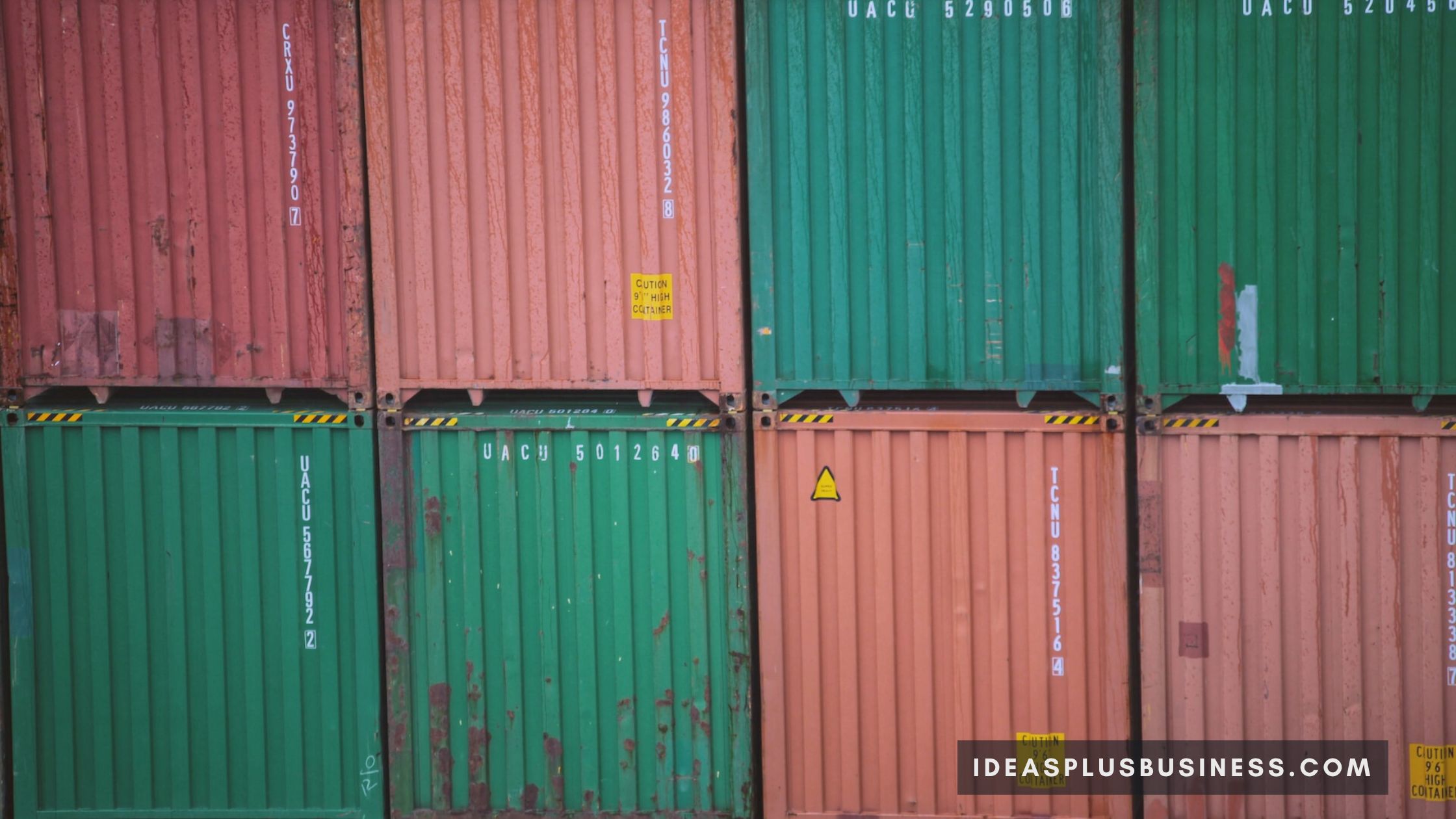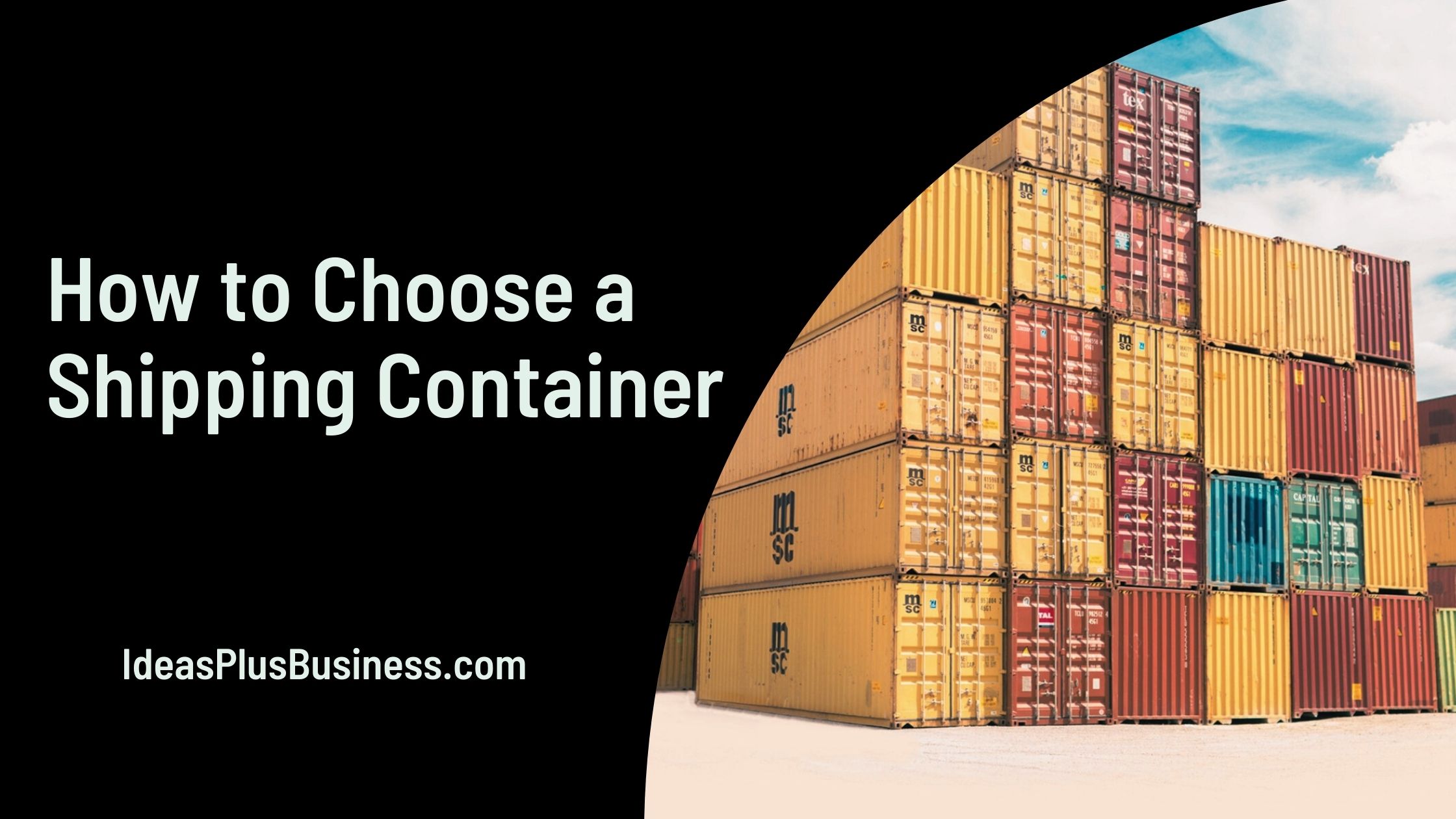Shipping containers are a perfect transport option when exporting or importing goods overseas. The containers provide versatility when it comes to what they can transport, which may include finished products or raw materials.
Shipping containers take advantage of economies of scale, particularly when transporting a lot of items, which helps optimize cost. They provide a safe avenue for transporting hazardous goods.
How to Choose a Shipping Container
Shipping containers minimize the risk of tampering or theft during transportation as they can only be opened up on reaching their final destination. Discussed below are four factors to consider when choosing a shipping container.
1. Eco-friendliness
Eco-friendliness is crucial to preventing pollution while minimizing carbon footprint, which helps protect the environment. Selecting eco-friendly shipping containers is one way you can leverage to contribute towards a sustainable environment.
Before settling on any option, consider whether the provider has some eco-friendly shipping containers for sale. Look for a supplier with used and refurbished shipping containers because these options minimize waste, reducing environmental impact.
Refurbished containers are sturdy, meaning they are long-lasting and don’t have to be replaced now and then.

2. Cost
Cost is a major consideration when looking for the correct shipping container, regardless of whether it is a used, rental, or new container.
The container’s dimension or size is a significant pricing element. Determine your size requirements before hitting the market to look for shipping containers. Other factors influencing the cost of shipping containers include:
- Your customization requirements: If you want your shipping container customized to suit your needs, you’ll have to pay more. The extent of the modifications you require will influence the price.
- The container’s condition and age: If you are buying a used shipping container, the cost will also differ based on the container’s condition and age. Consider looking for a reliable supplier, particularly if you purchase a used container. Find a container that will cater to your needs while ensuring it’s within your budget
If you intend to rent a shipping container, the duration you’ll need the container will affect the overall cost. Take into account all your options to pick a container that effectively meets your needs, including long-term and ongoing ones.
3. Container size variety
When it comes to shipping containers, there isn’t a one-size-fits-all option.
Various shipping container dimensions and sizes serve varying purposes. The containers are available in a broad standard size range, including 45ft, 40ft, 20ft, and 10ft, and come in heights and widths of 9 ft or 8ft.
While the 20ft shipping container is one of the most popular options and is appropriate for many storage requirements, it is crucial to factor in larger sizes if you need extra space for your transportation or storage needs. Evaluate your requirements to determine the size that best suits your needs before choosing a shipping container.
4. Material
Shipping containers are made from various materials, including aluminum, steel, and composite. Steel is among the popular shipping container materials thanks to its durability and strength.
Aluminum would be a perfect choice if you want a corrosion-resistant and lightweight shipping container for transportation purposes. Composite materials are ideal thanks to their weight and strength ratio, so make your choices based on your needs.

How much does a shipping container cost?
Shipping container prices can vary based on factors like size, condition, and location. Here are some simple explanations with real examples and case studies:
1. Standard 20 Foot Shipping Container
- Price Range: $1,500 to USD 4,000.
- Example: A used 20-foot container in good condition might cost around $2,500 in the United States. Prices can be higher for new containers or those in excellent condition.
In 2021, a logistics company in Houston, Texas purchased a used 20-foot container for $2,200. The container, manufactured in 2010, was in good condition with minimal wear and tear. The buyer chose this container for its affordability and suitability for storing non-perishable goods.
2. Standard 40 Ft Shipping Container
- Price Range: $2,500 to USD 6,000.
- Example: A used 40-foot container in decent condition could be priced at $3,500. Newer or specialized containers may cost more.
A manufacturing company in Rotterdam, Netherlands, invested in a new 40-foot container for $5,500 in 2022. The container was equipped with additional ventilation for the transportation of machinery parts that required airflow. The buyer opted for a new container to ensure the highest quality and longevity.
3. High Cube Shipping Containers
- Price Range: 10-20% more than standard containers.
- Example: A high cube 40-foot container may cost around $4,000 to $7,000, depending on factors like age and condition.
A California-based e-commerce business acquired a high cube 40-foot container for $6,500. The additional height allowed for efficient storage of oversized products. The container, purchased in 2023, was five years old and in excellent condition, meeting the company’s specific storage needs.
4. Specialized Shipping Containers
- Price Range: $5,000 to $10,000 or more.
- Example: Refrigerated or insulated containers, used for transporting temperature-sensitive goods, might be priced between $6,000 and $9,000.
A seafood export company in Sydney, Australia, invested in a refrigerated container for $8,000 to transport temperature-sensitive goods such as fresh fish. The container, purchased in 2022, featured advanced temperature control technology to maintain optimal conditions during transit, ensuring the quality of the perishable cargo.
5. Regional Variations
In 2021, a construction company in Dubai, United Arab Emirates, faced higher container prices due to increased demand in the region.
A standard 40-foot container, which would typically cost $4,000, was priced at $6,500. Despite the higher cost, the company found it more economical than alternative storage solutions for their building materials.
6. Additional Costs
A retailer in London, UK, purchased a standard 20-foot container for £2,500 in 2022. However, the total expenditure, including delivery to the store location, customs clearance, and basic modifications, amounted to £3,200.
This case underscores the importance of considering additional costs beyond the container’s purchase price.
NB: It is important to note that prices can fluctuate based on factors like global demand, container availability, and regional economic conditions. Always consider additional costs like transportation, customization, and any necessary modifications.
Prices mentioned here are approximate and may vary based on specific circumstances and market conditions at the time of purchase.

Conclusion
The right shipping containers play a significant role when transporting goods. Shipping container prices are dynamic and influenced by factors such as location, container type, age, and market conditions.
Businesses and individuals should carefully assess their specific requirements and budget constraints when making purchasing decisions. The examples in this article provide valuable insights into how different entities navigate the container market based on their unique needs and circumstances.
Considering these factors when choosing a shipping container can help you find the best option for your business.

I am Adeyemi Adetilewa, an SEO Specialist helping online businesses grow through content creation and proven SEO strategies. Proficient in WordPress CMS, Technical Site Audits, Search Engine Optimization, Keyword Research, and Technical Writing (Portfolio).
I help brands share unique and impactful stories through the use of public relations, advertising, and online marketing. My work has been featured in the Huffington Post, Thrive Global, Addicted2Success, Hackernoon, The Good Men Project, and other publications.

